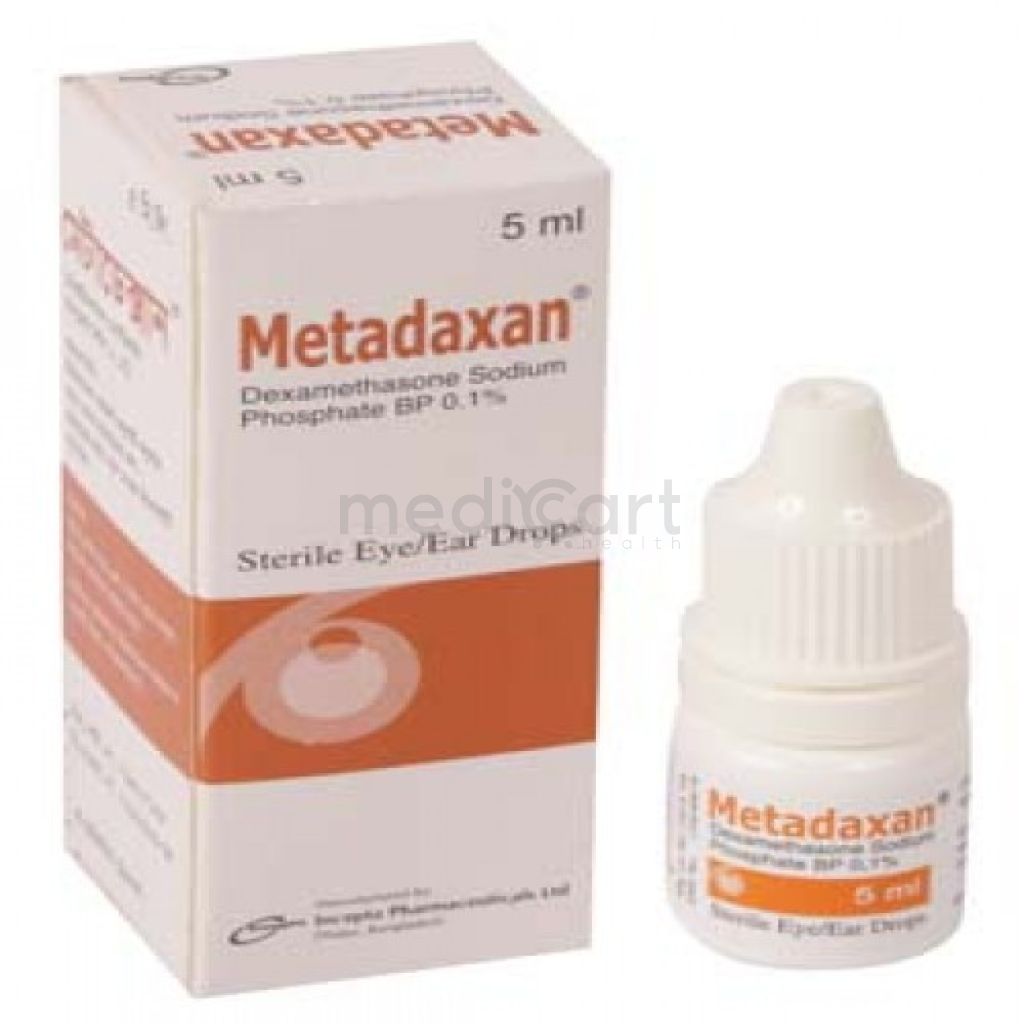

Acicot 0.001
Drops
Pack Size :
1 Drops x 1 Packet
Generics :
Dexamethasone 0.1% E/E prep
Manufacturer :
ACI Limited
Best Price *
TK
65.00
* Delivery will be done in Dhaka city only.
More Information About - Acicot 0.001
Description
Generic Name
Dexamethasone 0.1% E/E prepPrecaution
Prolonged use may result in ocular hypertension and/or glaucoma, with damage to the optic nerve, defects in visual acuity, and posterior subcapsular cataract formation.Elderly, children and adolescent; pregnancy and lactation. Lactation: Excretion in milk unknown/use cautionIndication
Allergic conjunctivitis, Ocular inflammation, Superficial punctate keratitis, Herpes zoster keratitis, Iritis, Cyclitis, Otic inflammation, Steroid responsive inflammatory conditions of the external auditory meatus, Allergic otitis externa, Infective otitis externa.Contra Indication
Hypersensitivity; Contraindicated in epithelial herpes simplex, vaccinia, varicella, and most other viral diseases of the cornea and conjunctiva; tuberculosis of the eye; fungal disease of ocular structures; other diseases caused by micro-organisms, may be enhanced by the presence of the steroid. It is contraindicated in patients with perforated ear drum membrane.Dose
N/ASide Effect
Topical application to eye Cataract (4% ) Ocular hypertension, Open-angle glaucoma, optic nerve damage, and defects in visual acuity and field of vision (after prolonged use) <1% Transient ocular stinging, burning, local irritation, ocular discharge, ocular discomfort or pain, foreign body sensation, hyperemia, abnormal vision/blurring, pruritus, lid margin crusting, sticky sensation, increased fibrin, dry eye, conjunctival edema, corneal staining, keratitis, tearing, edema, irritation, corneal ulcer, browache, eyelid erythema, corneal edema, infiltrate, corneal erosion, mydriasis, ptosis, epithelial punctate keratitis, and possible corneal or scleral malacia, [posterior subcapsular cataracts] (prolonged use)Pregnancy Category
Name : Not Classified
Description
FDA has not yet classified the drug into a specified pregnancy category.Mode of Action
Dexamethasone is a synthetic glucocorticoid which decreases inflammation by inhibiting the migration of leukocytes and reversal of increased capillary permeability. It suppresses normal immune response.Interaction
N/APregnancy Category Note
Pregnancy There are no adequate or well-controlled studies in pregnant women; should be used during pregnancy only if the potential benefit to the mother justifies the potential risk to the embryo or fetus However, prolonged or repeated corticoid use during pregnancy has been associated with an increased risk of intra-uterine growth retardation Lactation Systemically administered corticosteroids appear in human milk and could suppress growth, interfere with endogenous corticosteroid production, or cause other untoward effects Unknown whether topical administration of corticosteroids could result in sufficient systemic absorption to produce detectable quantities in human milkAdult Dose
Eye: 1 or 2 drops in conjunctival sac. Severe or acute inflammation: Every 30 to 60 minutes as initial therapy, reducing the dosage when favourable response is observed to every two to four hours. Further reduction may be made to one drop three or four times daily if sufficient to control inflammation. Chronic inflammation: Every three to six hours, or as necessary. Allergic inflammation: Every three to four hours until the desired response is obtained. Ear : Instill two or three drops to the ear at two or three hours interval.The frequency of dosage and duration of treatment may vary with the type of lession and severity.Child Dose
N/ARenal Dose
N/AAdministration
N/ADisclaimer
The information provided herein are for informational purposes only and not intended to be a substitute for professional medical advice, diagnosis, or treatment. Please note that this information should not be treated as a replacement for physical medical consultation or advice. Great effort has been placed to provide accurate and comprehensive data. However, Medicart along with its authors and editors make no representations or warranties and specifically disclaim all liability for any medical information provided on the site. The absence of any information and/or warning to any drug shall not be considered and assumed as an implied assurance of the Company.





